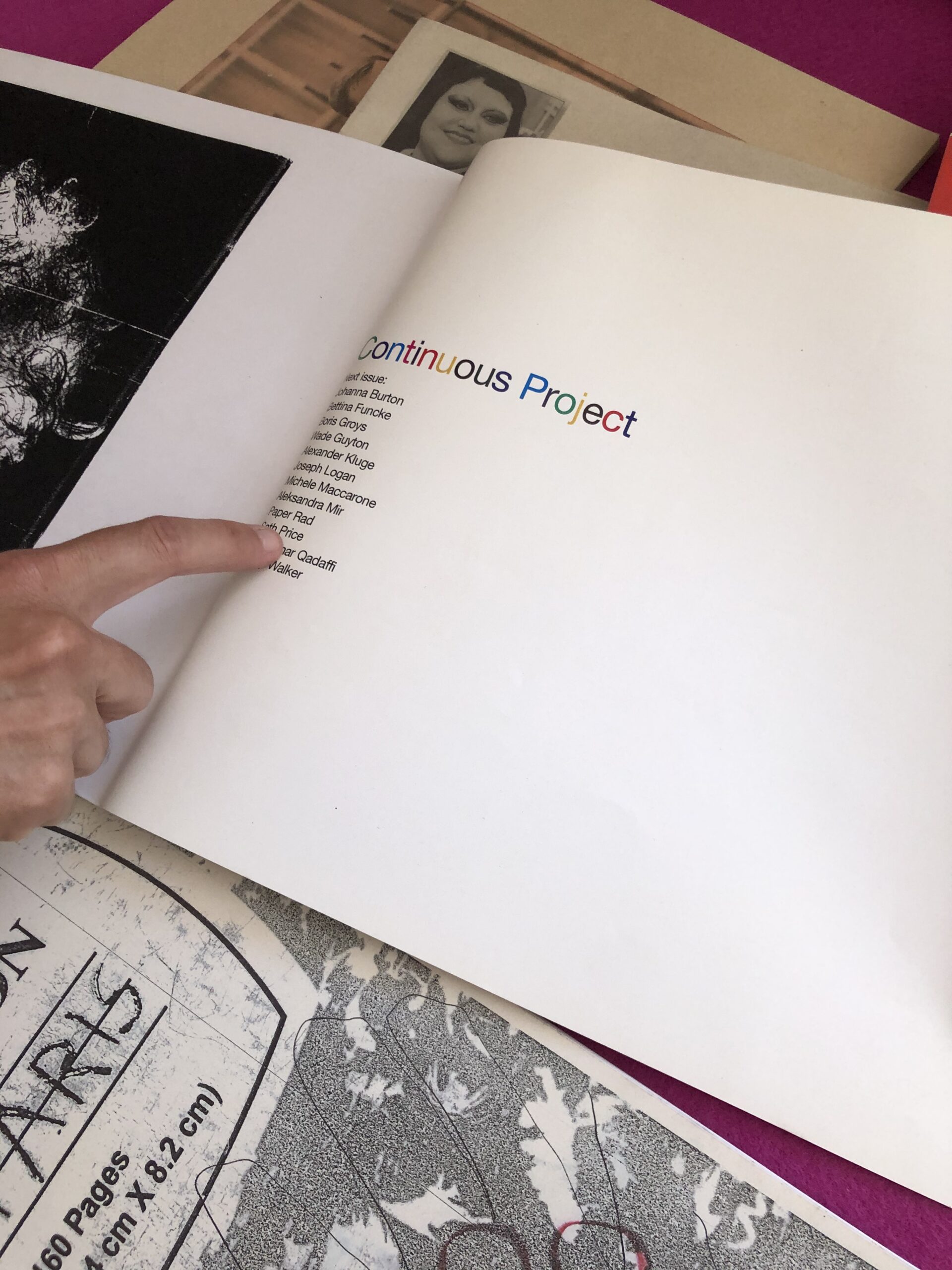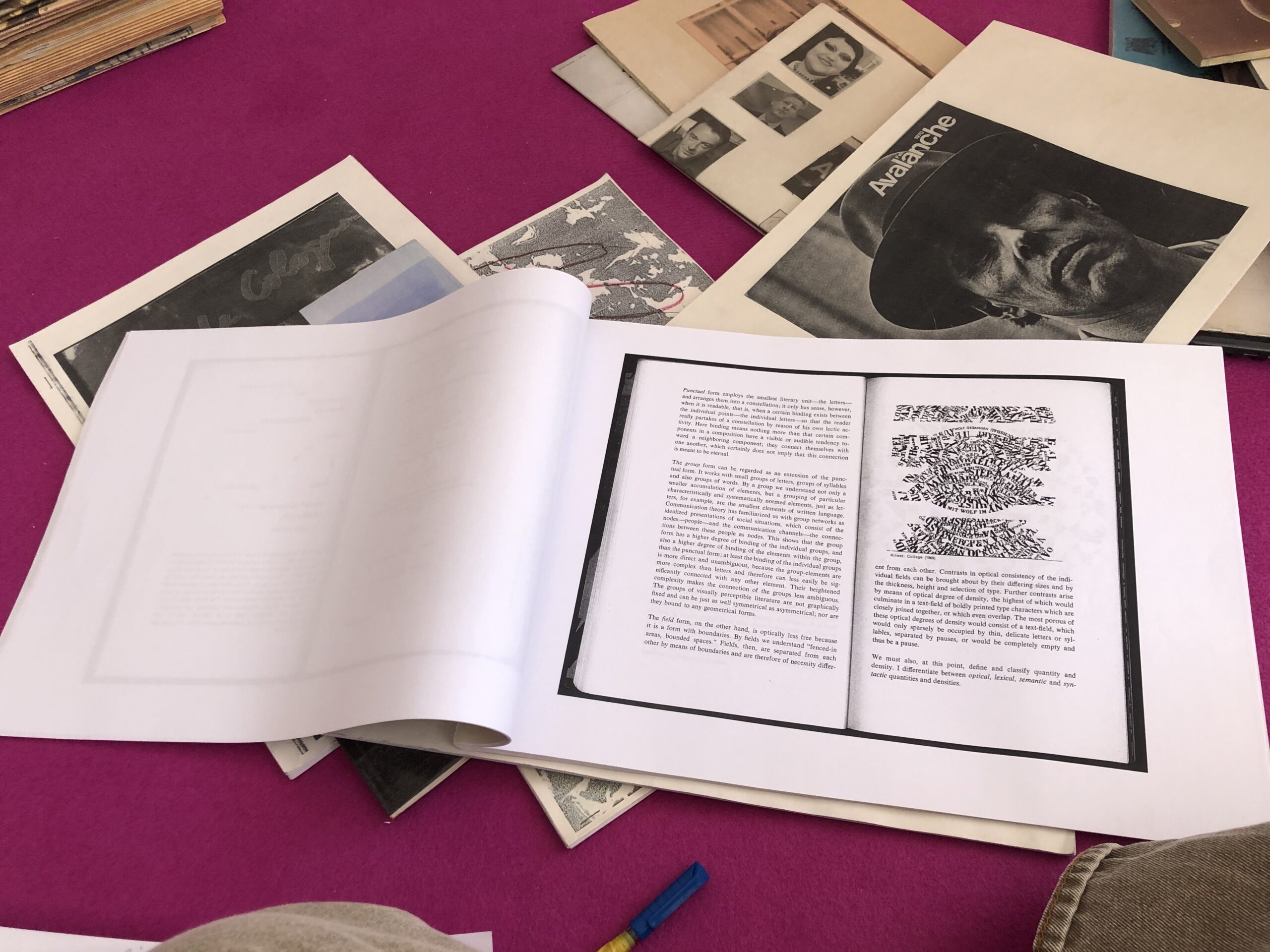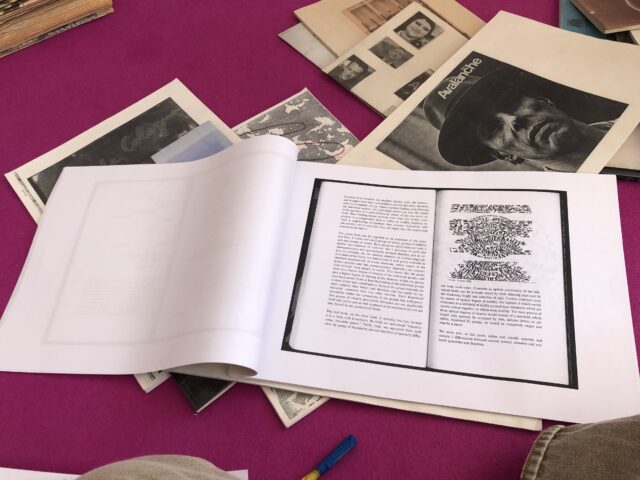
Over the last weeks, we catalogued the majority of BAS’s collection, with the exception of a number of new acquisitions and the reference book library. As the inventorying process comes to a close, we are still questioning how the catalog can best organize the information for a visitor. These questions are primarily in relationship to categories of genre and of authorship, and how they serve to frame and/or delimit the works in the collection. Many artists’ publications—which, within BAS’s collection, span material forms from the book to napkins, buttons, zines, leaflets, and posters—tend to defy typical genre categories. Further, often stemming from or in conversation with anti-capitalist and radical printing histories, many works eschew legible authorship or otherwise emphasize co-authorship, and seek to circulate outside what Jane Anderson calls the “author function,” or the close relationship between authorship, copyright, and the naturalization of power relationships through the archival space. [1] Consequently, to use these categories as methods of “sorting” the collection would necessarily both over- and under-define a number of items.
The term “collection” has been used within BAS’s history to challenge that of the “archive”: as artist Banu Cennetoğlu, BAS’s founder and initial collector, writes in 2017, “I tend to think about collections as a whole. . . Imagine the artists’ books we have at BAS. If you make a list of the authors/artists, dates, and place of production, you would have enough data to map the collection. That’s why I very much care about inventories. Anything beyond this pool of data is personal.” [2] As we complete the inventorying stage of BAS’s collection, it is clear that to impose a category of classification on the collection as the central method of navigation would be to likewise impose a value framework onto the collection—whether of the primacy of authorship, of the “book” over other media of publication, or of a linear chronology. As I write my paper, I am thinking about Cennetoğlu’s reference of “mapping the collection” as a way to think through how the data of the catalogue also points to relationships and collaborations between artists, resource sharing between alternative and independent organizations and collectives, and histories of knowledge production–how could a catalogue be reshaped to prioritize these types of information?
[1] Jane Anderson, “Anxieties of Authorship,” in Media Authorship, ed. Cynthia Chris and David A. Gerstner (London: Routledge, 2012), 230-231. [2] Banu Cennetoğlu, “In Conversation with Banu Cennetoglu,” with Ozge Ersoy, in Anita di Bianco, Corrections and Clarifications (Istanbul: collectorspace, 2017), 71.
